Transfer Tiling of Nanostructures for Large-Area Fabrication
Abstract
1. Introduction
2. Materials and Methods
3. Results and Discussion
4. Conclusions
Supplementary Materials
Author Contributions
Funding
Conflicts of Interest
References
- Huang, Y.-F.; Chattopadhyay, S.; Jen, Y.-J.; Peng, C.-Y.; Liu, T.-A.; Hsu, Y.-K.; Pan, C.-L.; Lo, H.-C.; Hsu, C.-H.; Chang, Y.-H. Improved broadband and quasi-omnidirectional anti-reflection properties with biomimetic silicon nanostructures. Nat. Nanotechnol. 2007, 2, 770–774. [Google Scholar] [CrossRef] [PubMed]
- Ahn, S.H.; Guo, L.J. High-speed roll-to-roll nanoimprint lithography on flexible plastic substrates. Adv. Mater. 2008, 20, 2044–2049. [Google Scholar] [CrossRef]
- Ahn, S.H.; Guo, L.J. Large-area roll-to-roll and roll-to-plate nanoimprint lithography: A step toward high-throughput application of continuous nanoimprinting. ACS Nano 2009, 3, 2304–2310. [Google Scholar] [CrossRef] [PubMed]
- Krebs, F.C.; Tromholt, T.; Jørgensen, M. Upscaling of polymer solar cell fabrication using full roll-to-roll processing. Nanoscale 2010, 2, 873–886. [Google Scholar] [CrossRef] [PubMed]
- Kwak, M.K.; Ok, J.G.; Lee, S.H.; Guo, L.J. Visually tolerable tiling (VTT) for making a large-area flexible patterned surface. Mater. Horiz. 2015, 2, 86–90. [Google Scholar] [CrossRef]
- Ok, J.G.; Shin, Y.J.; Park, H.J.; Guo, L.J. A step toward next-generation nanoimprint lithography: Extending productivity and applicability. Appl. Phys. A 2015, 121, 343–356. [Google Scholar] [CrossRef]
- Lee, S.H.; Lee, J.H.; Park, C.; Kwak, M.K. Roll-type photolithography for continuous fabrication of narrow bus wires. J. Micromech. Microeng. 2016, 26, 115008. [Google Scholar] [CrossRef]
- Lee, J.; Kim, J.Y.; Choi, J.H.; Ok, J.G.; Kwak, M.K. Scalable Fabrication of Flexible Microstencils by Using Sequentially Induced Dewetting Phenomenon. ACS Omega 2017, 2, 1097–1103. [Google Scholar] [CrossRef]
- Lee, J.H.; Na, M.; Kim, J.; Yoo, K.; Park, J.; Kim, J.D.; Oh, D.K.; Lee, S.; Youn, H.; Kwak, M.K. Rapid and conformal coating of polymer resins by airbrushing for continuous and high-speed roll-to-roll nanopatterning: Parametric quality controls and extended applications. Nano Convergence 2017, 4, 11. [Google Scholar] [CrossRef] [PubMed]
- Kwak, M.K.; Kim, T.I.; Kim, P.; Lee, H.H.; Suh, K.Y. Large-Area Dual-Scale Metal Transfer by Adhesive Force. Small 2009, 5, 928–932. [Google Scholar] [CrossRef] [PubMed]
- Chou, S.Y.; Krauss, P.R.; Renstrom, P.J. Nanoimprint lithography. J. Vac. Sci. Technol. B Microelectron. Nanometer Struct. Process. Meas. Phenomena 1996, 14, 4129–4133. [Google Scholar] [CrossRef]
- Chou, S.Y. Nanoimprint Lithography. U.S. Patents US5772905A, 30 June 1998. [Google Scholar]
- Guo, L.J. Nanoimprint lithography: Methods and material requirements. Adv. Mater. 2007, 19, 495–513. [Google Scholar] [CrossRef]
- Yoon, H.; Lee, H.; Lee, W.B. Toward residual-layer-free nanoimprint lithography in large-area fabrication. Korea-Aust. Rheol. J. 2014, 26, 39–48. [Google Scholar] [CrossRef]
- Kim, Y.S.; Lee, H.H.; Hammond, P.T. High density nanostructure transfer in soft molding using polyurethane acrylate molds and polyelectrolyte multilayers. Nanotechnology 2003, 14, 1140–1144. [Google Scholar] [CrossRef]
- Del Campo, A.; Arzt, E. Fabrication approaches for generating complex micro-and nanopatterns on polymeric surfaces. Chem. Rev. 2008, 108, 911–945. [Google Scholar] [CrossRef] [PubMed]
- Xu, H.; Qiu, F.; Wang, Y.; Wu, W.; Yang, D.; Guo, Q. UV-curable waterborne polyurethane-acrylate: Preparation, characterization and properties. Prog. Org. Coat. 2012, 73, 47–53. [Google Scholar] [CrossRef]
- Jeong, H.E.; Kwak, R.; Khademhosseini, A.; Suh, K.Y. UV-assisted capillary force lithography for engineering biomimetic multiscale hierarchical structures: From lotus leaf to gecko foot hairs. Nanoscale 2009, 1, 331–338. [Google Scholar] [CrossRef] [PubMed]
- Choi, S.-J.; Kim, H.N.; Bae, W.G.; Suh, K.-Y. Modulus-and surface energy-tunable ultraviolet-curable polyurethane acrylate: Properties and applications. J. Mater. Chem. 2011, 21, 14325–14335. [Google Scholar] [CrossRef]
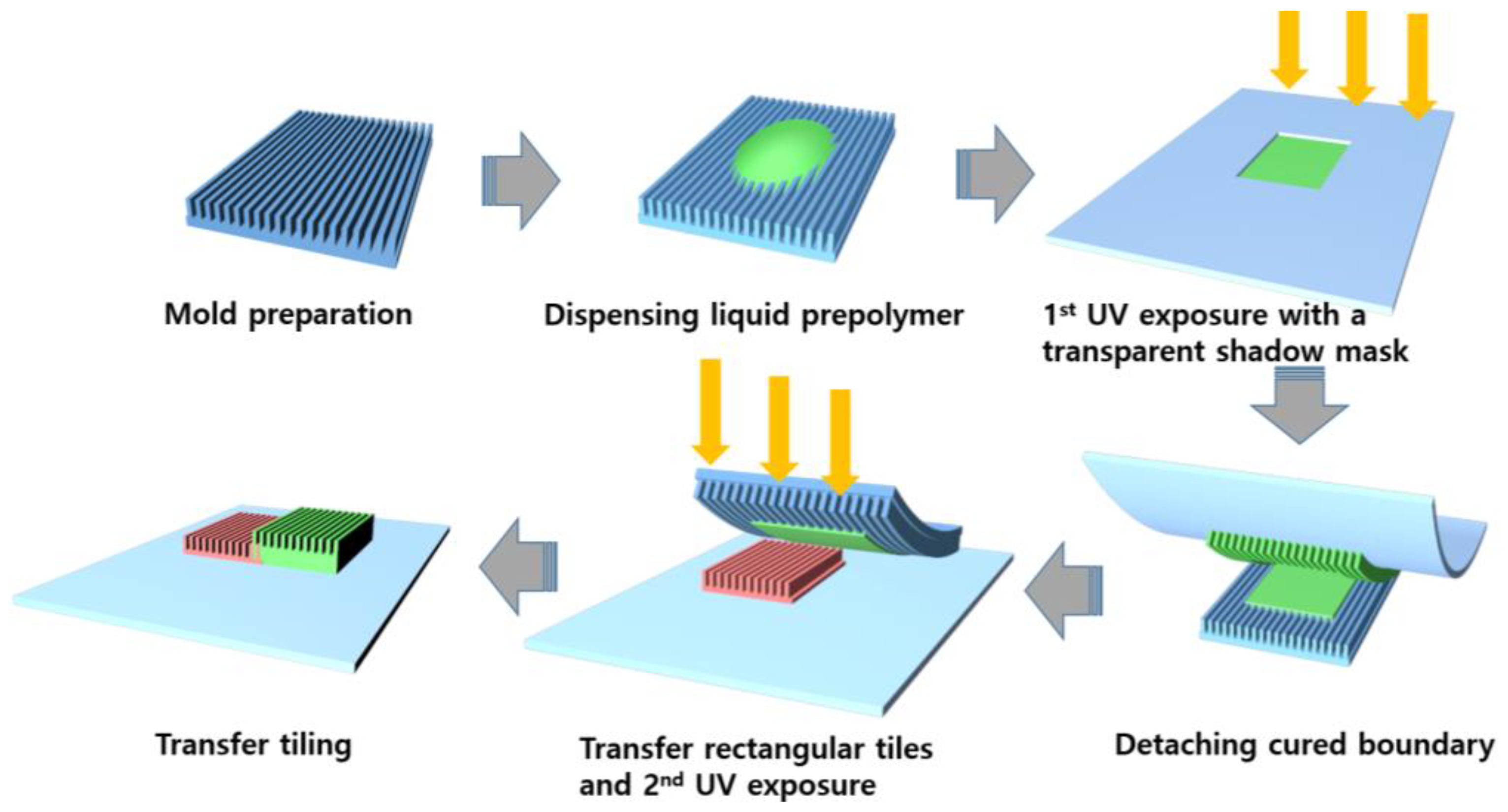
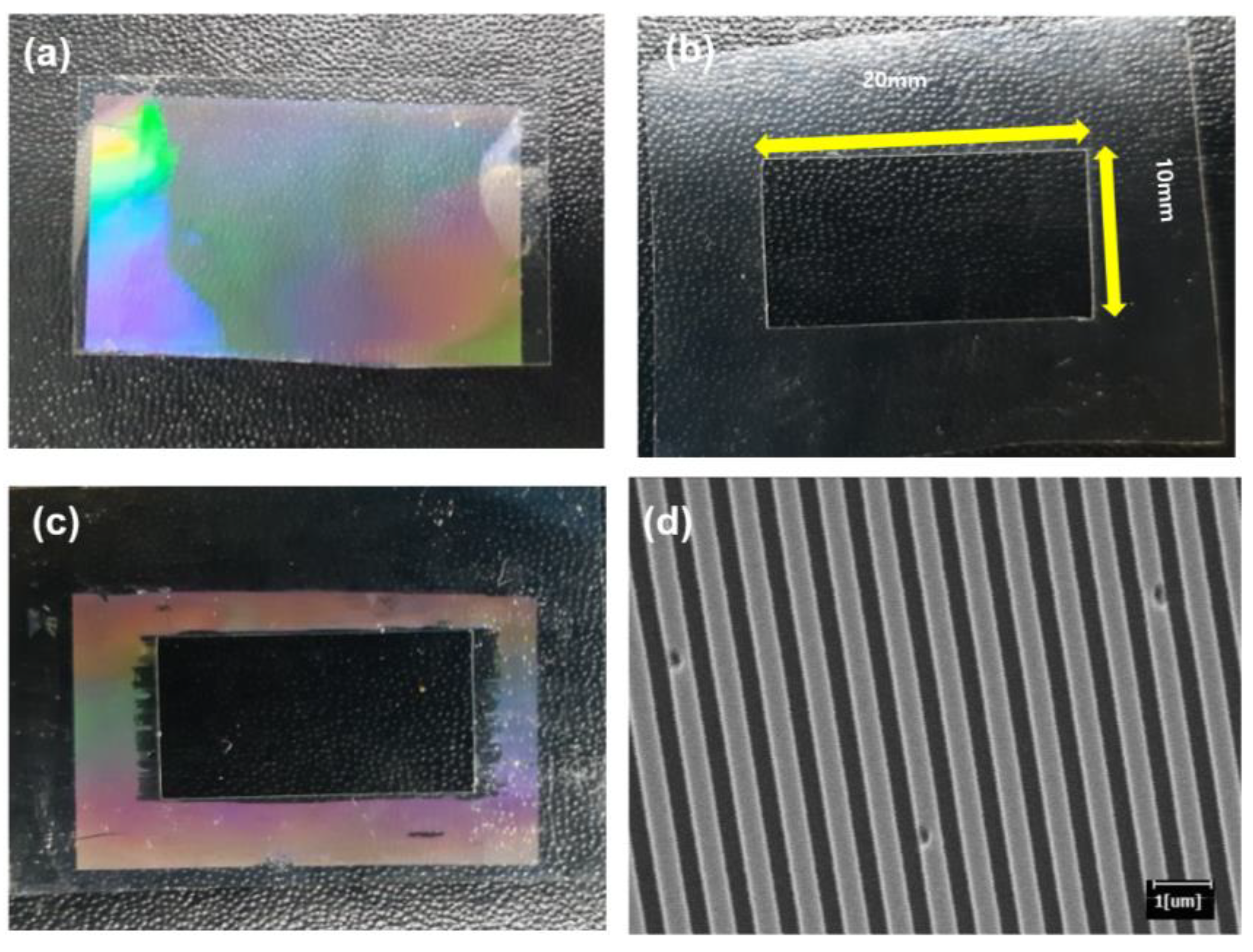
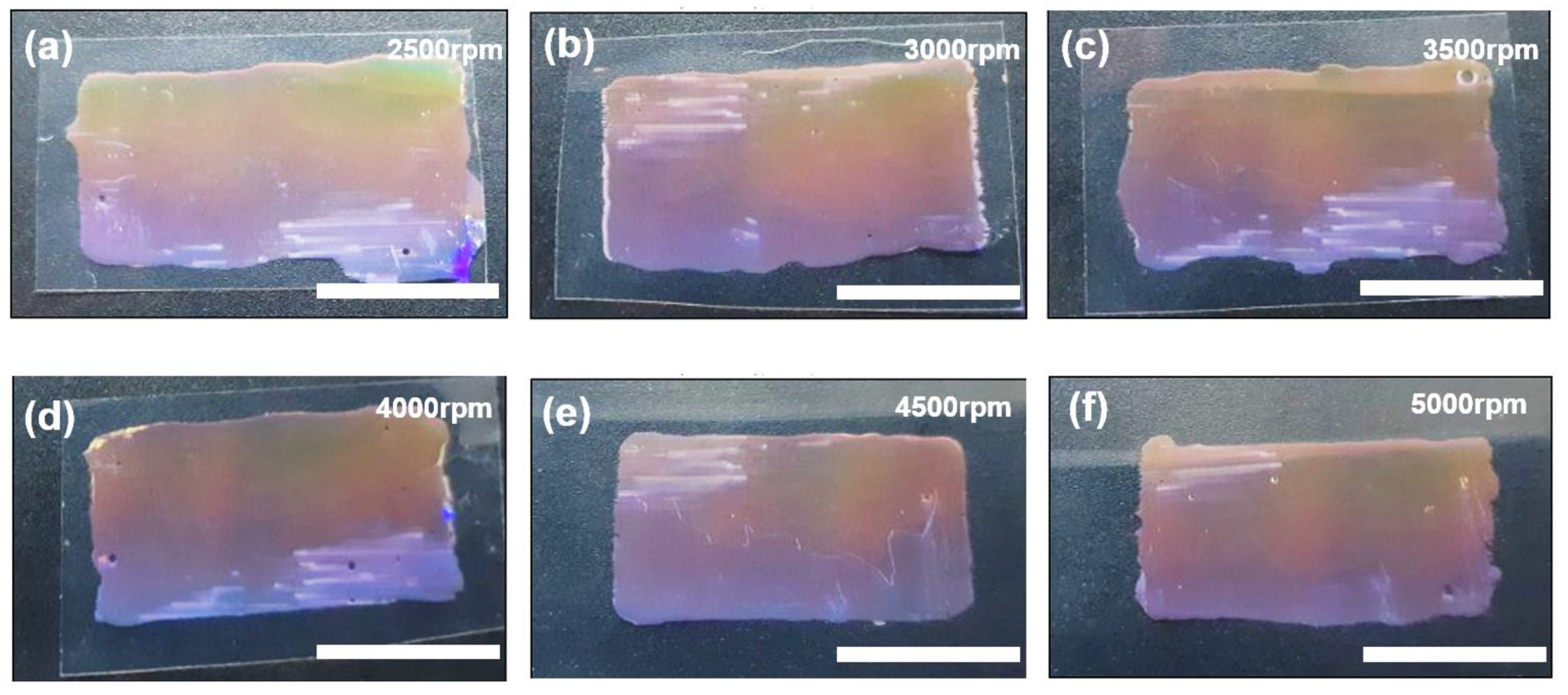
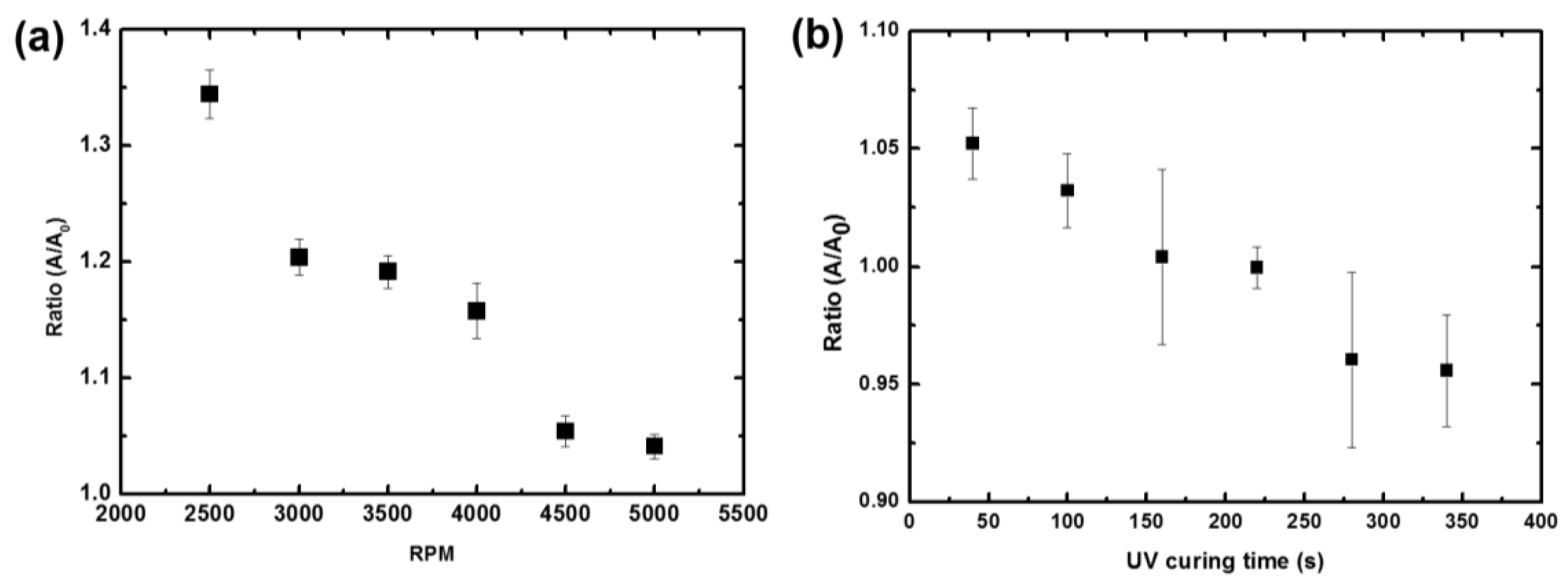

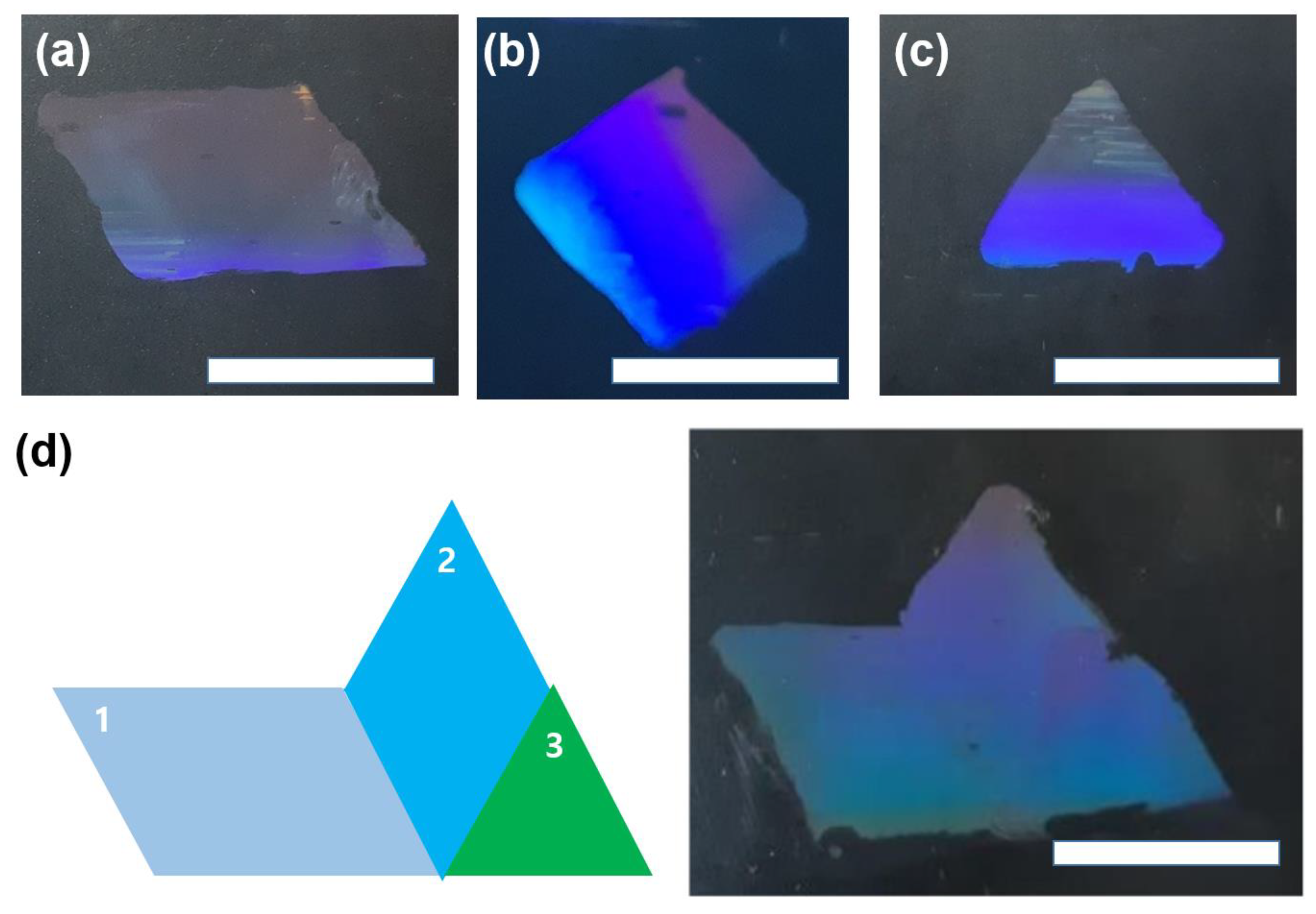
© 2018 by the authors. Licensee MDPI, Basel, Switzerland. This article is an open access article distributed under the terms and conditions of the Creative Commons Attribution (CC BY) license (http://creativecommons.org/licenses/by/4.0/).
Share and Cite
Kim, J.; Yoon, H. Transfer Tiling of Nanostructures for Large-Area Fabrication. Micromachines 2018, 9, 569. https://doi.org/10.3390/mi9110569
Kim J, Yoon H. Transfer Tiling of Nanostructures for Large-Area Fabrication. Micromachines. 2018; 9(11):569. https://doi.org/10.3390/mi9110569
Chicago/Turabian StyleKim, Jaekyoung, and Hyunsik Yoon. 2018. "Transfer Tiling of Nanostructures for Large-Area Fabrication" Micromachines 9, no. 11: 569. https://doi.org/10.3390/mi9110569
APA StyleKim, J., & Yoon, H. (2018). Transfer Tiling of Nanostructures for Large-Area Fabrication. Micromachines, 9(11), 569. https://doi.org/10.3390/mi9110569



